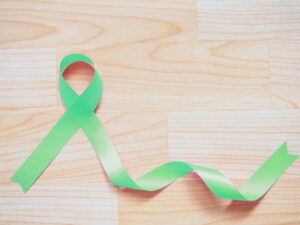What’s the Difference Between Celiac Disease, Gluten Intolerance, and a Wheat Allergy?
The gluten-free movement has been upon us for many years. We see bold, bright labels on grocery store shelves highlighting when a product is gluten-free. You can buy almond flour, gluten-free bread, gluten-free cookies, the list goes on.
It’s amazing how prevalent these items are becoming despite the fact that there is no such thing as a gluten allergy.
We repeat: THERE IS NO SUCH THING AS A GLUTEN ALLERGY.
But even though that statement is technically true, there is still a dire need for gluten-free products.
Why?
Because while there is no such thing as a gluten allergy, there are three distinct health concerns directly associated with gluten.
May is Celiac Disease Awareness Month and in honor of raising awareness, our imaging center in New Jersey is going to take some time to distinguish between celiac disease, gluten intolerance, and a wheat allergy.
First, let’s talk gluten.
Gluten is a protein found in wheat, barley, and rye. When worked properly, it’s what gives bread that chewy, airy texture. A lot of fad diets tout the need to remove gluten in order to help you lose weight, but gluten isn’t really the culprit. A gluten-free cookie isn’t any better for you than one made with wheat flour. If you’re goal is to lose weight, you should just cut down on cookies all together and stick with a balanced diet rich in fruits, vegetables, lean proteins, and whole grains…but we digress.
To get back on track, a gluten-free cookie makes it possible for people who suffer from one of the big three—celiac disease, gluten intolerance, or a wheat allergy—to still enjoy cookies.
What is Celiac Disease?
Celiac disease is an autoimmune disorder. It’s hereditary, meaning it runs in families, so if you have a close family member with celiac disease, which increases your risk factor. Right now, estimates indicate that 1 in 100 people are affected worldwide; however, only 30% of people are accurately diagnosed with celiac disease. Those with undiagnosed celiac disease experience damage to the small intestine. The more damage that occurs, the more at risk they are of developing more serious diseases like coronary artery disease and small bowel cancers. Celiac disease can’t be outgrown and there is no known cure at this time. Therefore, following a gluten-free diet is the way to go.
What is Gluten Intolerance?
About 6% of the U.S population suffers from gluten intolerance. This indicates a sensitivity to gluten which causes feelings of fatigue, nausea, and bloating after ingesting it. It is important to distinguish that this is not an allergy to gluten, and it is not life-threatening. That said, it does cause varying degrees of discomfort. While there is no cure for gluten intolerance, following a gluten-free diet brings much needed relief to those who experience it. Taking probiotics also increases the healthy bacteria in your gut which may relive symptoms of bloating, gas, or constipation.
What is a Wheat Allergy?
When someone is allergic to wheat, their body produces antibodies in reaction to the proteins found in wheat. This process causes symptoms such as swelling, itching, headache, difficulty breathing, and the scariest one: anaphylaxis. Anaphylaxis is a life-threatening symptom that leads to the throat closing up, making it impossible for the victim to breath. That’s when you call 911. Some children who suffer from a wheat allergy can outgrow it. Continuous research aims to understand and develop treatments for this issue in both children and adults. In the meantime, following a gluten-free diet is the best way to avoid any symptoms.
Celiac disease, wheat allergy, gluten intolerance—none of these health concerns are new. What is new is the ability to diagnose them. There are two blood tests used to diagnose celiac disease. From there, diagnostic imaging like an endoscopy or capsule endoscopy will be called for to take a closer look at the small intestine. Turn to ImageCare Radiology. Our imaging center in New Jersey is equipped to help you through your diagnostic journey so you can find the answers and treatment you need.